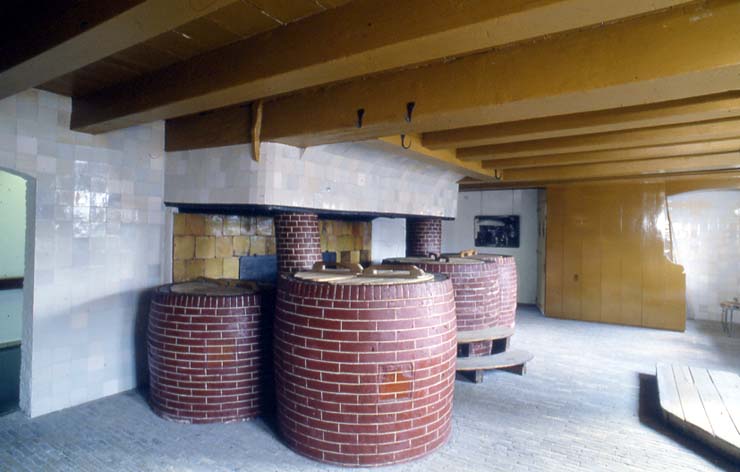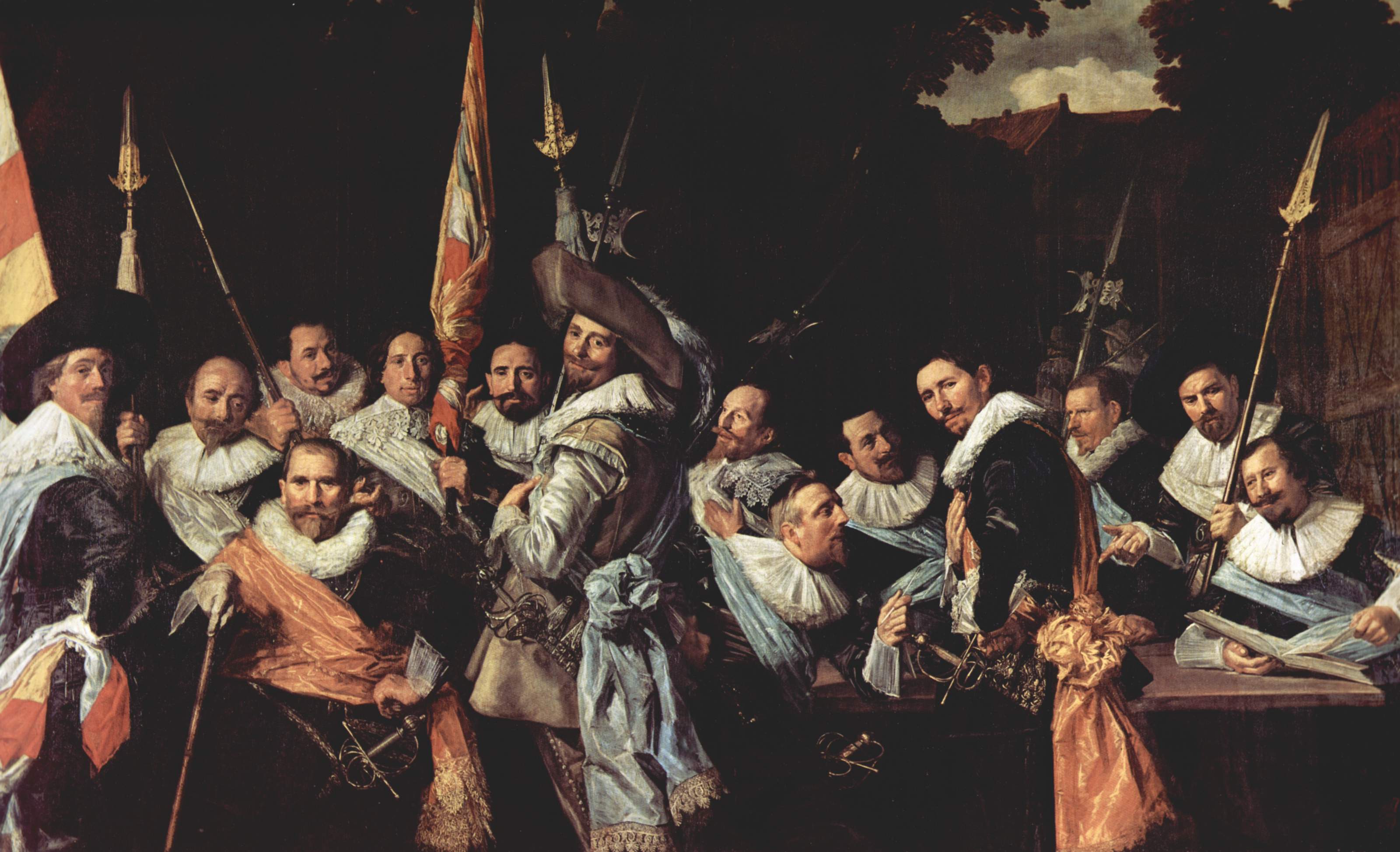|
Regents Of The Old Men's Almshouse
''The Regents of the Old Men's Almshouse'' is a regents group portrait of five regents and their servant painted by Frans Hals in 1664 for the Oude Mannenhuis in Haarlem, the Netherlands. It forms a pendant with the '' Regentesses of the Old Men's Almshouse''. Though it is no longer known which name belongs with which face, the regents portrayed were Jonas de Jong, Mattheus Everzwijn, Dr. Cornelis Westerloo, Daniel Deinoot and Johannes Walles.Catalog number 86, Frans Hals, by Seymour Slive (editor), with contributions by Pieter Biesboer, Martin Bijl, Karin Groen and Ella Hendriks, Michael Hoyle, Frances S. Jowell, Koos Levy-van Halm and Liesbeth Abraham, Bianca M. Du Mortier, Irene van Thiel-Stroman, Prestel-Verlag, Munich & Mercatorfonds, Antwerp, 1989, Frans Hals painted them in his "loose style", with rough brush strokes. The painting is traditionally dated 1664, though no archival evidence has yet been found to confirm this. The date is chosen as the middle of the term tha ... [...More Info...] [...Related Items...] OR: [Wikipedia] [Google] [Baidu] |
Frans Hals - Regents Of The Old Men's Almshouse - WGA11182
Frans is an Afrikaans, Danish, Dutch, Finnish, Icelandic, Norwegian, and Swedish given name, sometimes as a short form of ''François''. One cognate of Frans in English is ''Francis (given name), Francis''. Given name * Frans van Aarssens (1572–1641), Dutch diplomat and statesman * Frans Ackerman (1330–1387), Flemish statesman * Frans Adelaar (born 1960), Dutch football player and manager * Frans Alphons Maria Alting von Geusau (born 1933), Dutch legal scholar and diplomat * Frans Aerenhouts (born 1937), Belgian cyclist * Frans Ananias (born 1972), Namibian footballer * Frans Andersson (1911–1988), Danish bass-baritone * Frans Andriessen (1929–2019), Dutch politician * Frans Anneessens (1660–1719), Flemish protest leader * Frans van Anraat (born 1942), Dutch businessman and convicted war criminal * Frans Badens (floruit, fl. 1571–1618), Flemish painter * Frans Bak (born 1958), Danish composer, choral conductor, saxophonist, and pianist * Frans Decker (1684–1751), 18th ... [...More Info...] [...Related Items...] OR: [Wikipedia] [Google] [Baidu] |
Regents Group Portrait
A regents group portrait (''regentenstuk'' or ''regentessenstuk'' in Dutch, literally "regents' piece"), is a group portrait of the board of trustees, called regents or regentesses, of a charitable organization or guild. This type of group portrait was popular in Dutch Golden Age painting during the 17th century, and in the 18th century. They were intended to be hung in the ''regentenkamer'', the regents' meeting room, (Dutch) or another prominent location in the institution. The regents of a charitable organization (such as an , |
Frans Hals
Frans Hals the Elder (, , ; – 26 August 1666) was a Dutch Golden Age painter, chiefly of individual and group portraits and of genre works, who lived and worked in Haarlem. Hals played an important role in the evolution of 17th-century group Portrait painting, portraiture. He is known for his loose painterly brushwork. Biography Hals was born in 1582 or 1583 in Antwerp, then in the Spanish Netherlands, as the son of cloth merchant Franchois Fransz Hals van Mechelen ( 1542–1610) and his second wife Adriaentje van Geertenryck.Frans Hals iat the Netherlands Institute for Art History Like many, Hals's parents fled during the Fall of Antwerp (1584–1585) from the south to Haarlem in the new Dutch Republic in the north, where he lived for the remainder of his life. Hals studied under Flemish people, Flemi ... [...More Info...] [...Related Items...] OR: [Wikipedia] [Google] [Baidu] |
Oude Mannenhuis
An Oudemannenhuis, or ''Old Men's house'' is a Dutch term for a home for poor men older than sixty, who could spend their final days enjoying regular meals and a clean place to sleep. It can be regarded as an early type of retirement home, which lasted up to the 19th century. As an institution, they were an improvement over almshouses for the elderly poor known as hofjes. Because older men were generally less able to care for themselves than women, the city councils of the Netherlands built special purpose houses. After the introduction of ''Oudemannenhuizen'', the hofjes were designed almost exclusively for women, because women could organize themselves more efficiently. For women who became too feeble to take part in hofje life, special "old houses" for woman were opened, that were often combined with old men's houses. Like the hofjes, living in an old man's house was usually free of charge and was considered a favor. Similar to hofjes, the regents of old men's houses had a rege ... [...More Info...] [...Related Items...] OR: [Wikipedia] [Google] [Baidu] |
Haarlem
Haarlem (; predecessor of ''Harlem'' in English) is a city and municipality in the Netherlands. It is the capital of the province of North Holland. Haarlem is situated at the northern edge of the Randstad, one of the most populated metropolitan areas in Europe; it is also part of the Amsterdam metropolitan area, being located about 15 km to the west of the core city of Amsterdam. Haarlem had a population of in . Haarlem was granted city status or '' stadsrechten'' in 1245, although the first city walls were not built until 1270. The modern city encompasses the former municipality of Schoten as well as parts that previously belonged to Bloemendaal and Heemstede. Apart from the city, the municipality of Haarlem also includes the western part of the village of Spaarndam. Newer sections of Spaarndam lie within the neighbouring municipality of Haarlemmermeer. Geography Haarlem is located on the river Spaarne, giving it its nickname 'Spaarnestad' (Spaarne city). It is situated a ... [...More Info...] [...Related Items...] OR: [Wikipedia] [Google] [Baidu] |
Netherlands
) , anthem = ( en, "William of Nassau") , image_map = , map_caption = , subdivision_type = Sovereign state , subdivision_name = Kingdom of the Netherlands , established_title = Before independence , established_date = Spanish Netherlands , established_title2 = Act of Abjuration , established_date2 = 26 July 1581 , established_title3 = Peace of Münster , established_date3 = 30 January 1648 , established_title4 = Kingdom established , established_date4 = 16 March 1815 , established_title5 = Liberation Day (Netherlands), Liberation Day , established_date5 = 5 May 1945 , established_title6 = Charter for the Kingdom of the Netherlands, Kingdom Charter , established_date6 = 15 December 1954 , established_title7 = Dissolution of the Netherlands Antilles, Caribbean reorganisation , established_date7 = 10 October 2010 , official_languages = Dutch language, Dutch , languages_type = Regional languages , languages_sub = yes , languages = , languages2_type = Reco ... [...More Info...] [...Related Items...] OR: [Wikipedia] [Google] [Baidu] |
Pendant (art)
In art, a pendant is one of two paintings, statues, reliefs or other type of works of art intended as a pair. Typically, pendants are related thematically to each other and are displayed in close proximity. For example, pairs of portraits of married couples are very common, as are symmetrically arranged statues flanking an altar. Pendants may be the work of a single artist or of two artists, who in some instances might be in competition with one another. An example of the latter case is the pairing of the marble groups ''The Triumph of Faith over Idolatry'' by Jean-Baptiste Théodon and ''Religion Overthrowing Heresy and Hatred'' by Pierre Le Gros the Younger on the ''Altar of Saint Ignatius of Loyola'' (1695–1697/98), in the Church of the Gesù, Rome. When J. M. W. Turner bequeathed two of his paintings to the National Gallery in London with the clause that they should in perpetuity hang next to two landscape painting Landscape painting, also known as landscape art ... [...More Info...] [...Related Items...] OR: [Wikipedia] [Google] [Baidu] |
Regentesses Of The Old Men's Almshouse
''The Regentesses of the Old Men's Almshouse Haarlem'' is a regents group portrait of four regentesses and their servant painted by Frans Hals, ''c.'' 1664, for the Oude Mannenhuis in Haarlem, the Netherlands. It forms a pendant with the ''Regents of the Old Men's Almshouse''. Background The regentesses portrayed were (left to right) Adriaentje Schouten, Marijtje Willemsdr (also recorded as regentess of Het Dolhuys), Anna van Damme (first married Abraham de Ridder, then in 1650 married Salomon Cousaert), Adriana Bredenhof (wife of the ''schout'' Mattheus Everswijn).Catalog number 86, Frans Hals, by Seymour Slive (editor), with contributions by Pieter Biesboer, Martin Bijl, Karin Groen and Ella Hendriks, Michael Hoyle, Frances S. Jowell, Koos Levy-van Halm and Liesbeth Abraham, Bianca M. Du Mortier, Irene van Thiel-Stroman, Prestel-Verlag, Munich & Mercatorfonds, Antwerp, 1989, Frans Hals painted them in his "loose style", with rough brush strokes. The painting is traditionally ... [...More Info...] [...Related Items...] OR: [Wikipedia] [Google] [Baidu] |
Frans Hals Museum
The Frans Hals Museum is a museum located in Haarlem, the Netherlands. The museum was established in 1862. In 1950, the museum was split in two locations when the collection of modern art was moved to the '' Museum De Hallen'' (since 2018 called ''Hal)''. The main collection, including its famous 17th-century Frans Hals paintings, for which the museum is named, is located in the former ''Oude Mannenhuis'' on the Groot Heiligland. The museum was founded in 1862 in the newly renovated former Dominican church cloisters located in the back of the Haarlem city hall known as the ''Prinsenhof'', and when it needed more space, it moved to the recently vacated location of the town orphanage in 1913. The collection is based on the large number of paintings owned by the City of Haarlem, which includes over 100 artworks seized from Catholic churches in the 1580s after the Protestant Reformation, and Haarlem art rescued from demolished local buildings from the 15th century onwards. In 2018 t ... [...More Info...] [...Related Items...] OR: [Wikipedia] [Google] [Baidu] |
Collections In The Frans Hals Museum
Collection or Collections may refer to: * Cash collection, the function of an accounts receivable department * Collection (church), money donated by the congregation during a church service * Collection agency, agency to collect cash * Collections management (museum) ** Collection (museum), objects in a particular field forms the core basis for the museum ** Fonds in archives ** Private collection, sometimes just called "collection" * Collection (Oxford colleges), a beginning-of-term exam or Principal's Collections * Collection (horse), a horse carrying more weight on his hindquarters than his forehand * Collection (racehorse), an Irish-bred, Hong Kong based Thoroughbred racehorse * Collection (publishing), a gathering of books under the same title at the same publisher * Scientific collection, any systematic collection of objects for scientific study Collection may also refer to: Computing * Collection (abstract data type), the abstract concept of collections in computer science ... [...More Info...] [...Related Items...] OR: [Wikipedia] [Google] [Baidu] |
Portraits By Frans Hals
A portrait is a painting, photograph, sculpture, or other artistic representation of a person, in which the face and its expressions are predominant. The intent is to display the likeness, personality, and even the mood of the person. For this reason, in photography a portrait is generally not a snapshot, but a composed image of a person in a still position. A portrait often shows a person looking directly at the painter or photographer, in order to most successfully engage the subject with the viewer. History Prehistorical portraiture Plastered human skulls were reconstructed human skulls that were made in the ancient Levant between 9000 and 6000 BC in the Pre-Pottery Neolithic B period. They represent some of the oldest forms of art in the Middle East and demonstrate that the prehistoric population took great care in burying their ancestors below their homes. The skulls denote some of the earliest sculptural examples of portraiture in the history of art. Historical portraitu ... [...More Info...] [...Related Items...] OR: [Wikipedia] [Google] [Baidu] |





